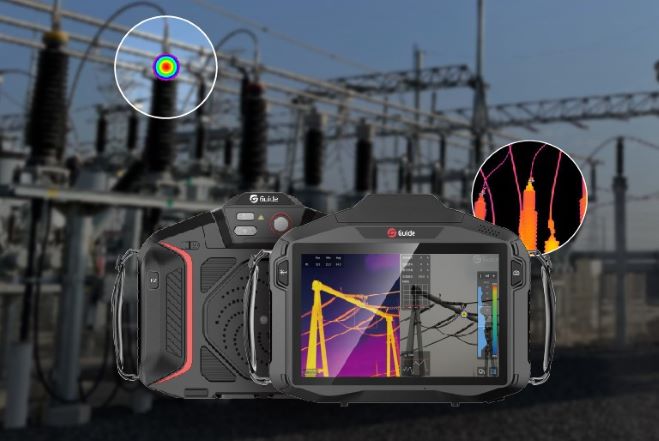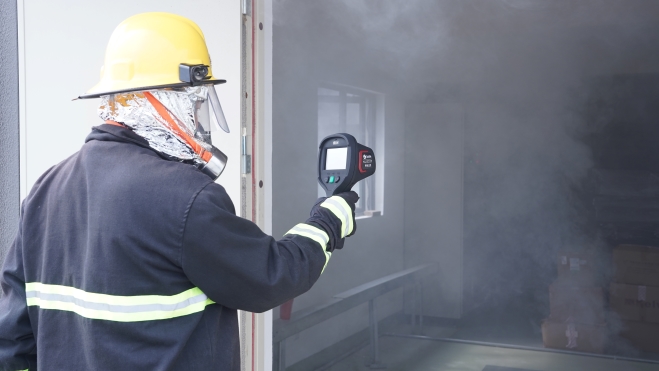With this era of pursuit for energy conservation and sustainable development, thermal imagers have become essential instruments in the toolbox of energy efficiency solutions. Thermal imaging provides valuable information for temperature change analysis by application of the principle of detection of infrared radiation. Thermal imagers are used in many applications in various fields, including building management and industrial operations.
Applications in Building Management
Identifying Heat Loss
One of the primary applications of thermal imagers in building management is detecting heat loss. Buildings in cold climates are especially vulnerable to significant heat losses through walls, windows, and roofs. New York City's Empire State Building is a case in point. Prior to experiencing a comprehensive energy-efficiency retrofit, the building had already been subjected to thermal imaging surveys. Thermal imaging tools revealed that considerable heat was escaping through the outdated windows and building facade cracks. On this information, the old windows were replaced with efficient ones and the cracks were filled by the building management, thereby saving a lot of energy. Similarly, in a large residential apartment complex in Europe, thermal imaging was utilized to identify poorly insulated apartments. With selective insulation retrofits, the overall energy use of the complex was reduced by 20%.
HVAC System Inspection
Thermal imagers can also work very well at assessing heating, ventilation, and air-conditioning (HVAC) systems. Faulty HVAC equipment, for example, jammed ducts or inoperative compressors, can be behind inefficiencies as well as unnecessary electricity consumption. In a large shopping complex in California, thermal imaging testing of the HVAC system showed that many ducts were severely clogged with dirt and debris buildup. Because of this, the appliance had to work harder and consume more power. After dusts were cleaned, the shopping complex saw a power consumption decrease in HVAC by 15%.
Industrial Applications
Equipment Maintenance
In the industrial setting, thermal imagers are employed to keep equipment in check. A vast majority of industrial equipment, such as motors, transformers, and conveyor belts, generates heat when running. Any deviation in operating temperatures may be symptomatic of potential faults. An automotive manufacturing plant in Michigan used thermal imagers to scan its production line equipment. Thermal imaging detected early overheating symptoms of the motor that caused a critical conveyor belt. By replacing the clogged bearings at the right moment, the factory avoided a costly breakdown that could have halted output for days. It not only avoided repair cost savings but also reduced energy waste in terms of wasteful operation.
Process Optimization
Thermal imagers can optimize industrial processes. In a factory, they can monitor the temperature distribution of furnaces and ovens, and other heat-consuming processes. The Taiwanese leader in semiconductors employed thermal imagers, for instance, in its wafer-baking oven to regulate with precise accuracy its oven temperature. Through even heat distribution, it enhanced the quality of semiconductor products and reduced defective items. At the same time, energy consumption decreased by 10% due to better performance of the oven.
Agricultural Applications
Thermal imagers are increasingly being utilized in agriculture to improve energy efficiency. Thermal imaging used to be used in a massive greenhouse in the Netherlands to reveal the temperature of the greenhouse environment. By figuring out the areas of irregular temperatures, the farmers maximized the air flow and heating systems. As a result, they decreased electricity consumption by 13% whilst maximizing plant growth.
Data Center Applications
Data centers need an enormous amount of energy. In one large data center in Singapore, thermal imagers were used to detect hotspots in server racks. By rearranging the servers and optimizing the cooling system based on thermal imaging reports, the data center reduced its power consumption by 8%.
Advantages
Thermal imager camera offer several advantages in energy efficiency solutions. They supply a non-contact and fast technique for detecting temperature variations, saving time and effort. Additionally, they can be used in difficult-to-attain areas, barring the need for direct bodily contact.
In short, thermal imaging is an essential device for pursuing electricity efficiency. With the development of technology, thermal imagers are predicted to come to be greater cheap and user-friendly, similarly improving their position in electricity conservation in a range of industries. Wuhan Guide Sensmart Tech Co., Ltd., established in 2016, focuses on the development, manufacture, and marketing of infrared thermal imaging products for commercial applications. There are department workplaces in some countries, and potential clients are welcome to inquire.













.svg)

.jpg)



